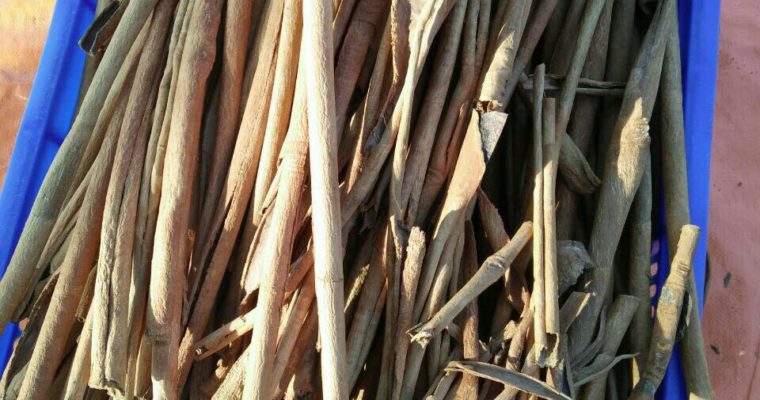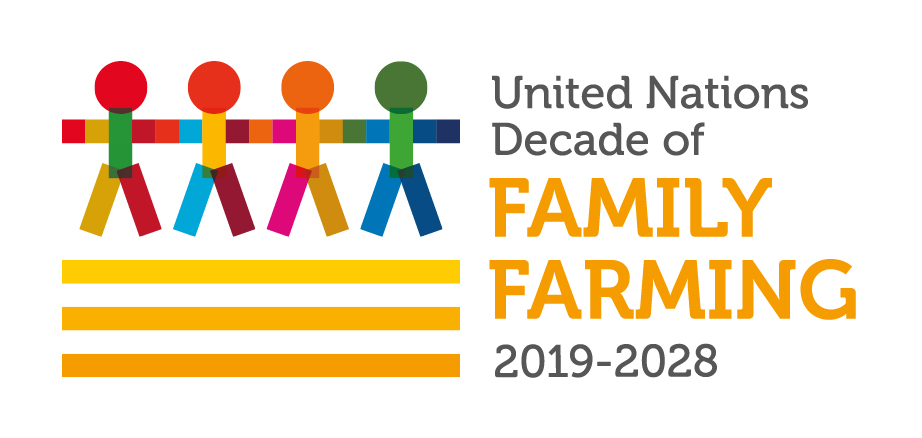Discovering the Fortune in Cinnamon
by Vietnam Farmers’ Union (VNFU), Vietnam
Growing cinnamon in Vietnam’s forests
Vietnam has 16,247,492 hectares of agri-forest areas, with a forest cover of 42 percent. Of these, 5.5 million hectares (ha) are protection forests, 8.5 million are production forests and 2.2 million are lands without forests. Income from forestry production reached Vietnamese Dong 23.9 trillion (approximately $1B) in 2015 gaining 7.09% since 2013. Total forest product export turnover reached $ 7 billion, up 14% compared to 2014.
Since the 1990s, the Vietnam government has been allocating land use rights over almost 9M hectares of state forestland to households, communities, and economic entities. This has been the Government’s way of involving local people in protecting forests, developing plantations, and improving living standards.
Cinnamon is a thriving forest product in Vietnam. Aside from enhancing the flavor and aroma of food, it can improve blood sugar levels and cure a common cold, among many other medicinal properties.
Cinnamon production has been increasing in Vietnam by 10% every year since 2008. By 2015, the total area planted to cinnamon trees has reached 102, 171 hectares, of which 39% is found in Yen Bai District.
Vietnam has three main types of cinnamon: (1) Cinnamomum cassia also called cinnamon Yen Bai; (2) Cinnamon loureirii or cinnamon Saigon and (3) Cinnamomum verum or cinnamon Ceylon.
An estimated 25,500 tons of cinnamon was produced in 2015. Cinnamon exported to countries like India, USA, and South Korea likewise increased from 13,000 tons in 2008 to 24,000 tons in 2013.
In Yen Bai province, most smallholders are involved in cinnamon planting and production. A local cooperative from the Dao Thinh commune unearthed a goldmine in this tree of fortune.
Socioeconomic and political situation of Dao Thinh commune
The Dao Thinh commune is in the lowlands of the Tran Yen district in the Yen Bai province with a total area of 1,333 hectares. Of these, 1,220 hectares are agricultural land; 113 hectares are non-agricultural and 0.44 hectares is unused or vacant land. The commune has a population of some 2,755 people or 750 households.
To date, the commune has an area of 858.71 ha, including 123.71ha of natural forests and178.45 ha of plantation land. Cinnamon plantations cover 504 ha, while 70.8 ha are forests, mostly planted with acacia and bodhi trees.
Two cooperatives were established in the 1990s in Dao Thinh commune, specializing in forest cultivation and processing of forest products. Each cooperative has 13 to 15 members with an average annual income of VND 80 million. The cooperative often hires 30 to 40 laborers.
There are also six voluntary cooperatives, each with 5 to 15 households managing an area of 10 to 50 hectares of forests. There are 11 nursery gardens owned by these farmer households who supply seedlings to other farmers in the surrounding areas. Some 163 hectares are planted to tea with average productivity of 8,500kg/ha and an estimated output of 1,520 tons.
The two cooperatives are registered with the district authorities and abide by the Vietnam Cooperative law. They actively cooperated with other enterprises to build a cinnamon oil processing factory that contributed to the increased revenue of the cooperatives and their members.
Meanwhile, the voluntary co-ops are not yet registered with the local government. Hence, they have less land and they need to consolidate their efforts for more effective production and management of their land. The members of the groups have tried cooperating with each other in all phases of production–from growing seedlings, planting, tending, harvesting, and marketing of their products. However, most of the groups still sell raw products because of low capital to
purchase machinery for processing.
History of the case
In 1992, Dao Thinh farmers began growing cinnamon trees. The cinnamon tree can only be harvested after 7 to 10 years.
From 1998, people started realizing the value of cinnamon. Leaves can be used to distill essential oils, while its wood and rind can be sold. Thus, farmers replaced some trees with cinnamon. The economy became more and more developed with 90 percent of households earning more. After a decade, the forest cover increased to 60% and the people were more conscious of forest management and the need to invest in intensive farming and production forestry to develop the economy.
Although the government encourages farmers to recognize the value of forests, they still encounter many difficulties in production processes and have limited access to financial resources for intensive forestry, markets, and sales.
All 750-farmer households in Dao Thinh commune grew cinnamon trees and developed many kinds of products. But those products were sold in the local market only or in the Chinese market with low, unstable prices. The farmers also lacked the expertise to grow, cultivate and process the cinnamon better.
Created in 2008 under the call of the Vietnam Farmers Union (VNFU) to promote the collective economy, the Cinnamon Cooperation Group was established with 35 members, including eight female-headed households, who managed 135 hectares of forest.
Before 2014, or before the intervention of VNFU-Forest and Farm Facility (FFF), the Cinnamon Cooperation Group was not officially registered with the Commune People’s Committee as a collective (as defined in Vietnamese Government Decree 151/2007/ND-CP). Members spontaneously gathered to mainly share information, experiences, and labor in forest plantation and marketing acacia round woods.
People sold the products individually and mostly to middlemen in the commune. The group also did not have an investment fund for processing machinery, which resulted in limited power in negotiating prices with buyers, resulting in a low profit.
Most of the group leaders have not been trained so they did not know how to organize and manage the group. They also had no orientation in developing and operating FFPOs (forest and farm producer organizations) more efficiently. The organizations making up the cooperation group did not yet access preferential loans, as they were still unregistered. They obtained mostly short-term loans from the Government’s farmers’ support fund.
Effects of the issue on the people/community
Realizing the important role of the collective groups in the socio-economic development of the commune, the Dao Thinh Commune People’s Committee has included development support for collective groups in the commune’s socio-economic development work plan. However, the
the situation of the collective groups in the commune has not changed because of limited resources and capacity.
Steps taken by other stakeholders to address the issue and corresponding outcomes
In 2014, the FFF started its intervention in Vietnam. As the program’s implementing organization, the Vietnam Farmers Union selected Yen Bai Province and the Cinnamon Grower Collective Group in Dao Thinh commune as one of the target beneficiaries.
Leaders and members of the group were invited to several trainings on market analysis and development, wood sawing techniques, facilitators’ skills, proposal writing skills, and numerous study visits to successful forest-based business models in Northern and Central Vietnam. They also had a chance to participate in roundtable discussions at the commune, district, and provincial levels to dialogue with local authorities, banks, and other stakeholders to express their need for support.
Status of the case
The activities under the FFF project significantly helped raise the people’s awareness of the benefits of collective action in managing a business. By October 2015, 15 out of 35 households decided to contribute their own money (ranging from VND 10 to 50 million per household) to collect VND 300 million as initial capital to buy and gather cinnamon bark and leaves and sell them to companies in Hanoi.
With the support of the FFF team, the group conducted its own market research and it started reaching out not only to local customers but also to big processing companies in Hanoi and other provinces, such as Hagimex Company, Lam Son Hai Company, and Vietnam Cinnamon and Vietnam Star Anise Processing and Exporting Company. As a result, after nine months, the cinnamon production and business have brought revenue of approximately VND 520 million to the Dao Thinh farmers. The average income of group members increased by three to seven percent.
Before the FFF project, the farmer households sold their products to local middlemen at VND 16,000 per kilogram. Through FFF support, with activities such as marketing, capacity building, and linkages with partners, the collective group sells cinnamon products directly to companies in Hanoi for VND 17,000 to 17,500 per kilogram.
Working with big customers made the group members realize the importance of acquiring organic certification for their planted forests and the need to upgrade to a cooperative so they can become a legally recognized entity eligible to issue an official tax invoice. Their leaders believe that being a cooperative will help them meet the requirements of organic-certified companies and take full advantage of the government’s support policies in promoting the collective economy. Thus, with the support of FFF small grants and the Yen Bai Department of Forestry, in 2016, the group planned to extend its membership, submit an application to form a cooperative and ask its members to comply with the criteria for organic certification in forest planting and harvesting.
Factors for Success
The initial success of the cinnamon collective group in Dao Thinh commune is attributed to several factors.
First, the group leader was very active, broad-minded, willing to take risks, and has a good financial foundation to turn all plans into action. He was also conscious that the benefits from the project were shared by the members and even by other people in the commune. Mr. Tue, the group leader, said that at first, very few households agreed to contribute money to operate the business. But its initial profitability eventually attracted more and more people to increase their investments.
Secondly, continuous trust-building is very necessary among members and between members and leaders through transparent financial management, frequent communication, awareness-raising activities, and regular monitoring.
Thirdly, appropriate and timely support from the FFF project catalyzed the development of the organization into a more capable agroforestry enterprise by investing in processing rather than merely selling raw materials.
Lastly, networking with other producer organizations and cooperation with local authorities and other stakeholders helped increase the compositeness of the business and made use of supporting policies.
Recommendations
As the Dao Thinh Commune Farmers’ Union chairman said, “The cinnamon group has progressed but it still needs organizational management knowledge and skills to develop and transform into a cooperative.” More immediately, the group needs support for the following activities:
a. Skills development on accounting and financial management, advanced cinnamon harvesting and processing techniques, and organic cinnamon development;
b. Dialogues with banks and local government to avail of loans with fair terms;
c. Study visits to learn more from successful models;
d. Strengthening linkages of producer groups with processing companies and trade partners;
e. Further market research and strengthening of the group’s organizational management
capacity; and,
f. Promoting products and networking with more stakeholders.
With local authorities, especially the district people committee, organic cinnamon production needs to be expanded at the district level to involve more farmers. These officials can support forest producers with better policies and information related to credit, loans, land and forest certification, forest road investment, and the like.
A network of service providers (e.g., local authorities, relevant departments, farmers groups) can be formed to create an information-sharing mechanism where groups can regularly access relevant product and business information. Resources need to be mobilized to support the
improvement or construction of “forest to market” roads.
More individual cinnamon farmers need to be encouraged to join or organize themselves into collective groups and then into cooperatives. If these cinnamon groups are successful, the district committee could decide to expand to other communes in the district and expand to other districts of the province.
Finally, support should be maintained to help these farmers regarding sustainable forest management. It is also important to establish sustainable mechanisms for access of non-timber forest products to external markets and support more women to get involved through their local groups.




Comments are closed